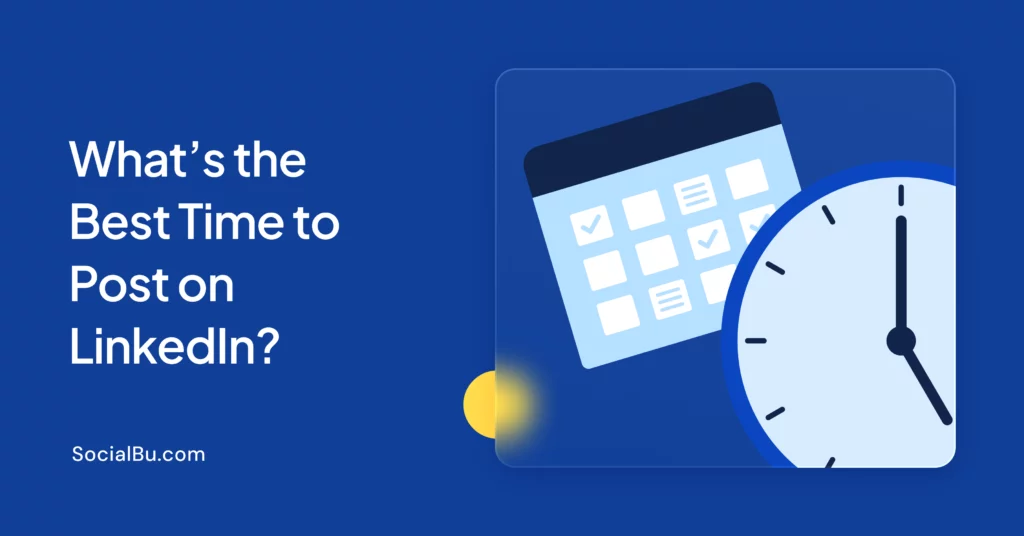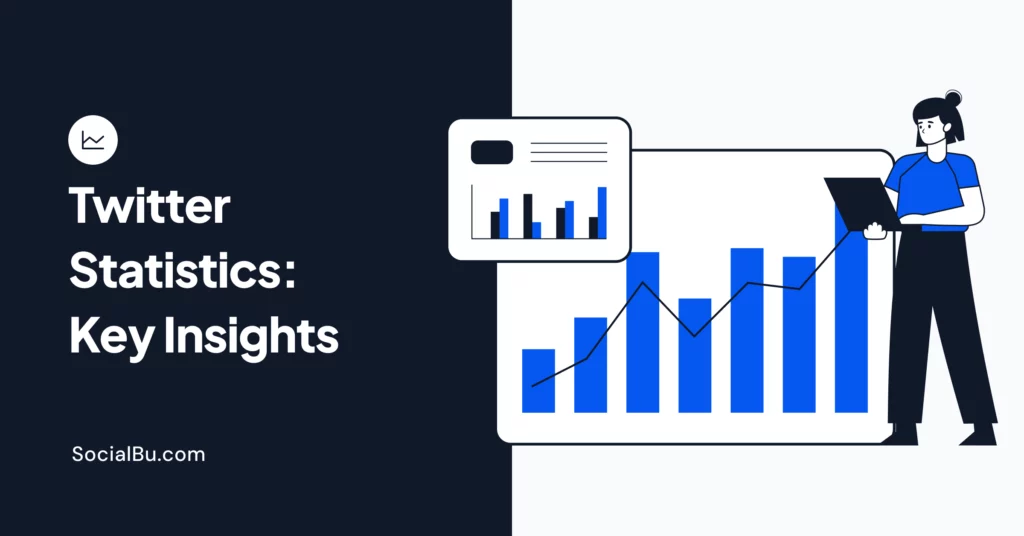Launching a new product or service on social media can be overwhelming. With countless platforms and ever-changing algorithms, it’s easy to feel lost. That’s where a well-crafted social media launch plan comes in. It’s your roadmap to success.
Following the right strategies can capture attention, build excitement, and drive conversions. Whether you’re a seasoned marketer or just starting, this guide will equip you with the tools and knowledge to create a launch that leaves a lasting impression.
Let’s discover how to make your next social media launch successful.
1. Define Clear Goals and Objectives
A well-defined social media launch plan starts with setting clear, measurable goals. Without specific objectives, your efforts can lack direction and purpose. Clear goals provide a roadmap to success and help you track your progress.
Types of Goals to Consider
When defining goals, consider what you want to achieve with your social media launch. Here are some common objectives:
- Brand Awareness: Increase the visibility of your new product or service.
- Lead Generation: Collect potential customer information for future marketing.
- Sales: Drive direct sales through your social media channels.
- Engagement: Foster interaction with your audience through likes, comments, and shares.
How to Set Effective Goals
To set effective goals, use the SMART criteria. This approach ensures your goals are clear and attainable within a specified timeframe.
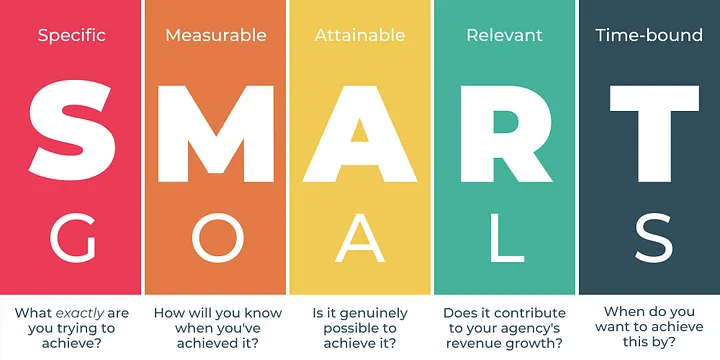
For example, instead of setting a vague goal like “increase followers,” set a SMART goal: “Increase Instagram followers by 20% in three months.”
Align Goals with Overall Business Objectives
Ensure your social media goals align with your overall business objectives. This alignment helps maintain consistency across all marketing efforts and maximizes the impact of your launch.
Utilizing SocialBu for Goal Tracking
SocialBu offers features to help you track and measure your progress toward these goals. You can monitor key metrics, schedule posts, and analyze performance, making it easier to stay on track and adjust your strategy as needed.
Define clear goals and objectives to set the foundation for a successful social media launch. These goals will guide your strategy, provide measurable benchmarks, and ensure your efforts align with your broader business objectives.
2. Research and Understand Your Target Audience
A successful social media launch plan hinges on deeply understanding your target audience. Knowing who your audience is, what they like, and how they behave on social media enables you to tailor your content and strategies effectively.
Identifying Your Target Audience
Start by defining your ideal customer’s demographics. Consider factors such as age, gender, location, income level, and education. Psychographic details, including interests, values, and lifestyle choices, are equally important.
Tools for Audience Research
Leverage tools to gather insights about your audience. Platforms like Google Analytics and social media insights can provide valuable data on your current followers and website visitors. SocialBu’s analytics feature can help you dive deeper into these insights, providing detailed reports on audience demographics and behaviour.
Creating Audience Personas
Once you have gathered enough data, create detailed audience personas. These personas represent your ideal customers and help you visualize and understand their needs and preferences.
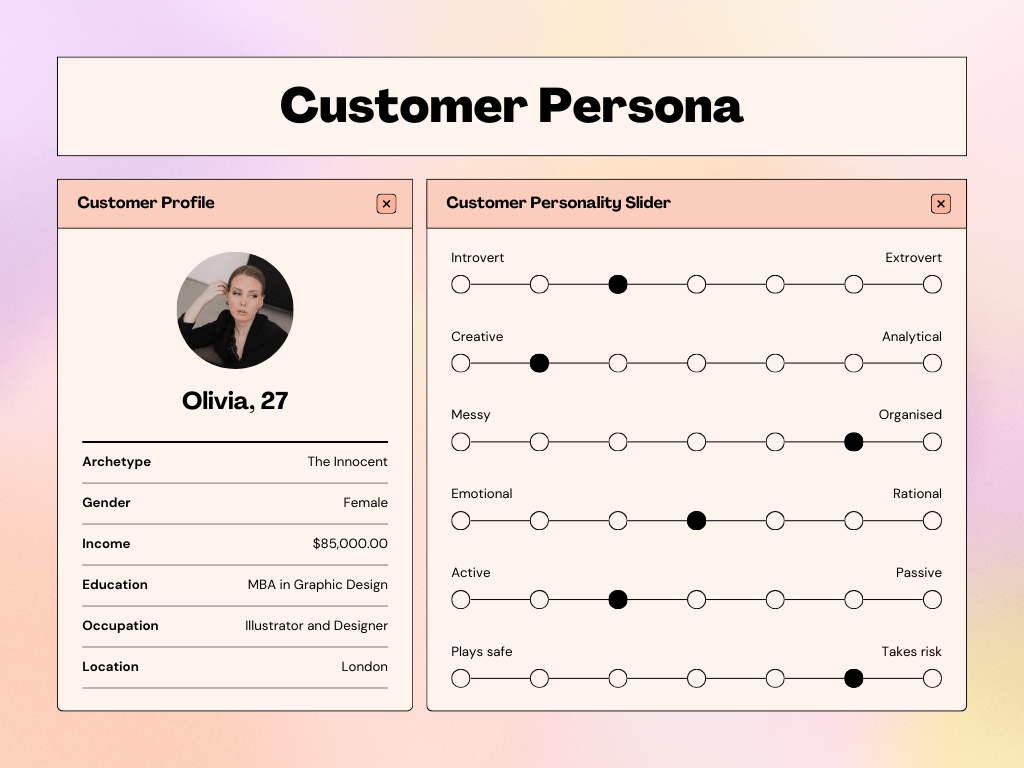
For example, suppose you’re launching a new fitness app. In that case, your audience personas might include “Fitness Enthusiast Emma,” a 30-year-old woman who loves running and healthy eating, and “Busy Professional John,” a 40-year-old man looking for quick and effective workouts.
Tailoring Content to Your Audience
Understanding your audience allows you to create content that resonates with them. Use the insights from your research to tailor your messaging, tone, and visuals to match their preferences. For example, if your audience prefers video content, create engaging videos.
Knowing your audience and what they want allows you to create content that captures their attention and meets their needs, leading to a more successful launch.
3. Develop a Comprehensive Content Calendar
A well-organized content calendar is essential for a successful social media launch plan. It helps you plan and schedule your posts, ensuring consistency and timely delivery of your content.
Creating Your Content Calendar
The next step is to create an effective content calendar. Start by mapping out important dates and milestones related to your product launch. Include key dates such as the launch day, pre-launch teaser campaign, and special events or promotions.
Next, plan your content around these dates. Determine the types of content you will post and the platforms you will use. Include a mix of product updates, behind-the-scenes looks, user-generated content, and promotional posts.
Using a Social Media Launch Plan Template
Utilize a social media launch plan template to organize your content calendar. A template can help you outline your content strategy, set deadlines, and track progress.
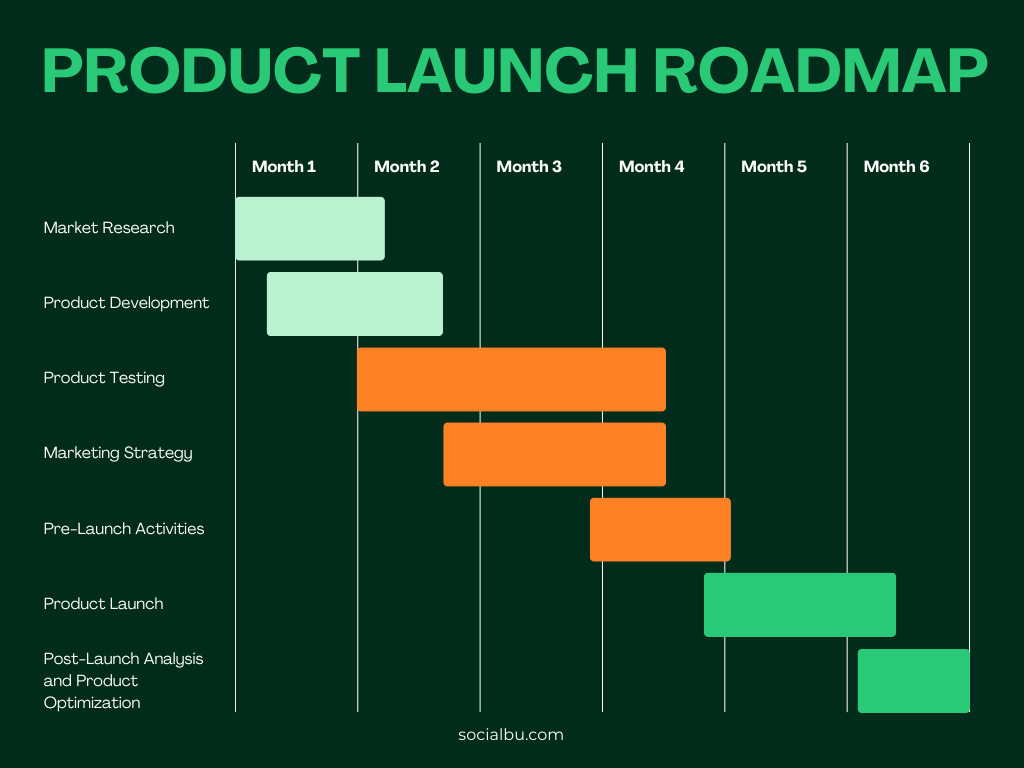
Scheduling and Automating Posts
Scheduling your posts in advance ensures that your content is consistently published at optimal times. Tools like SocialBu allow you to schedule and automate your social media posts, saving you time and ensuring your content reaches your audience when they are most active.
Monitoring and Adjusting Your Calendar
Review and adjust your content calendar regularly based on performance metrics and feedback. Use analytics to identify which types of content perform best and adjust your strategy accordingly.
Developing a comprehensive content calendar is critical to your social media launch plan. It ensures that your content is well-organized, timely, and consistent, helping you maintain momentum and engagement throughout your launch.
4. Craft Engaging Pre-Launch Content
Creating a buzz on social media before your product launch is crucial for generating excitement and anticipation. Engaging pre-launch content builds awareness and interest, setting the stage for a successful launch.
Types of Pre-Launch Content
To maximize impact, diversify your pre-launch content. Here are some effective types:
- Teasers and Sneak Peeks: To intrigue your audience, share glimpses of your product. Social media teaser campaign examples can include short videos, images, or even a countdown.
- Behind-the-Scenes Content: Show the process of creating your product. This humanizes your brand and builds a connection with your audience.
- User-Generated Content: Encourage your audience to share their excitement. This can be incentivized through contests or giveaways.
- Announcements and Updates: Keep your audience informed about important milestones leading up to the launch.
Creating Pre-Launch Social Media Posts
When crafting pre-launch social media posts, focus on storytelling. Tell the story behind your product, its development, and the problem it solves. Use high-quality visuals and engaging captions to capture your audience’s attention.
Examples of Effective Pre-Launch Posts
- Teaser Video: Post a short video showing a key feature of your product with a caption like, “Can you guess what’s coming? Stay tuned!”
- Behind-the-Scenes Photo: Share a photo of your team working on the product with a caption like, “We’ve been working hard to bring you something amazing. Get ready for the big reveal!”
- User-Generated Content Contest: Announce a contest where followers can share their excitement for a chance to win early access to the product.
Crafting engaging pre-launch content is essential for creating a buzz on social media. By diversifying your content and using tools like SocialBu to schedule and automate posts, you can build excitement and anticipation for your product launch.
5. Leverage Influencers and Brand Advocates
Influencers and brand advocates can amplify your social media launch plan by reaching a wider audience and adding credibility to your product. Their endorsement can significantly boost your brand’s visibility and trustworthiness.
Identifying the Right Influencers
To leverage influencers effectively, identify those who align with your brand values and target audience. Look for influencers with an engaged following and a genuine interest in your industry.
Building Relationships with Influencers
Approach influencers with a personalized message highlighting why your product is a good fit for their audience. Offer them exclusive access to your product and involve them in the pre-launch phase to build a genuine connection.
Creating Collaborative Content
Work with influencers to create content that resonates with their followers. This can include product reviews, unboxing videos, or live Q&A sessions. Ensure the content is authentic and aligns with both your brand and the influencer’s style.
Encouraging Brand Advocacy
In addition to influencers, tap into your existing customer base for brand advocates. Encourage satisfied customers to share their experiences and create user-generated content. This can be incentivized through referral programs or exclusive perks.
Examples of Influencer and Advocate Content
- Influencer Review: Partner with an influencer to create an in-depth review of your product, highlighting its key features and benefits.
- Live Q&A Session: Host a live session with an influencer, during which they will answer questions about your product and share their excitement for the launch.
- Customer Testimonials: Share testimonials from satisfied customers to build trust and credibility among your audience.
Leveraging influencers and brand advocates is a powerful strategy for your social media launch plan. Collaborating with the right influencers and encouraging brand advocacy can amplify your reach and create a buzz that drives your product launch’s success.
6. Utilize Paid Advertising Strategically
Paid advertising can supercharge your social media launch plan by quickly reaching a larger, targeted audience. It ensures your product gains visibility among potential customers who might not know your brand otherwise.
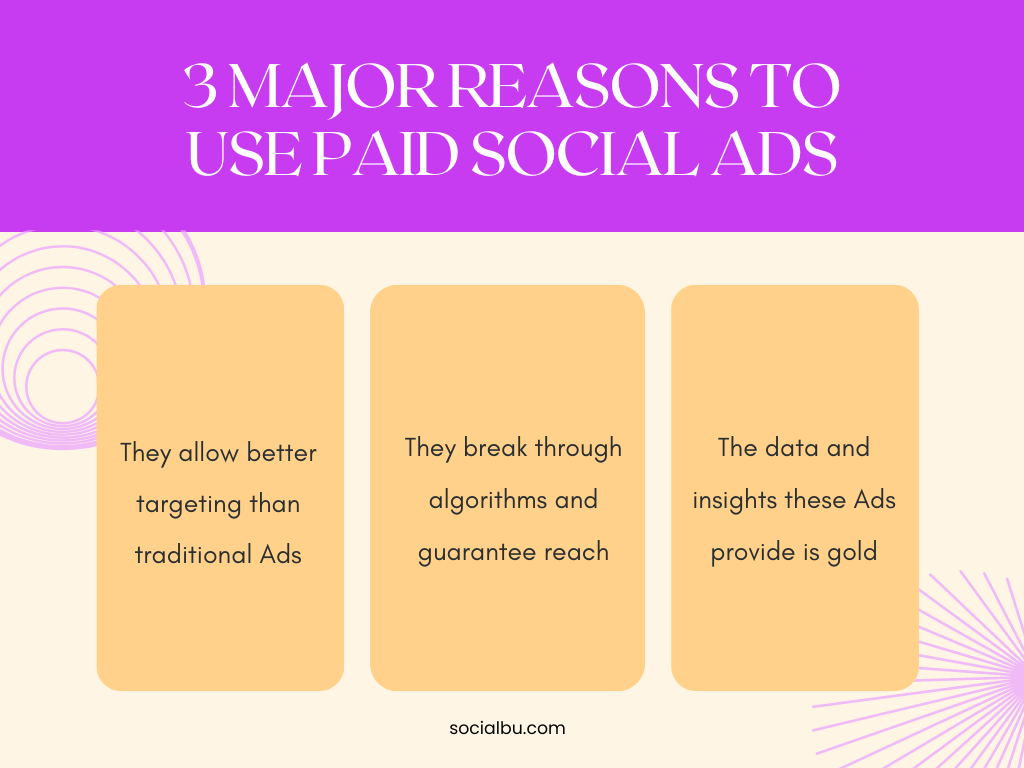
Choosing the Right Platforms
Select platforms where your target audience is most active. Common choices include Facebook, Instagram, LinkedIn, and Twitter. Each platform offers unique advantages and ad formats that can align with your campaign goals.
Setting Up Effective Ad Campaigns
Start by defining your campaign objectives. Are you aiming for brand awareness, website traffic, or conversions? Once your goals are clear, create compelling ad creatives highlighting your product’s key features and benefits.
Targeting Your Audience
Use the targeting options available on each platform to reach your ideal audience. You can target based on demographics, interests, behaviours, and even lookalike audiences. Detailed targeting ensures your ads are shown to users most likely interested in your product.
Budgeting and Bidding Strategies
Determine a realistic budget for your ad campaigns. Estimate your budget using your goals and the average costs per click or impression on your chosen platforms. Experiment with bidding strategies, such as cost-per-click (CPC) or cost-per-impression (CPM), to find the best for your campaign.
Monitoring and Optimizing Ad Performance
Monitor your ad performance regularly using the analytics tools the ad platforms provide. Track key metrics like click-through rates (CTR), conversion rates, and return on ad spend (ROAS). Use this data to optimize your campaigns by adjusting targeting, ad creatives, or bidding strategies.
Strategically utilizing paid advertising is essential for a successful social media launch plan. You can maximise your product’s visibility and impact by selecting the right platforms, effectively targeting your audience, and continuously optimizing your campaigns.
7. Monitor, Adjust, and Engage Post-Launch
The work doesn’t stop after your product launch. Monitoring, adjusting, and engaging with your audience post-launch is crucial for maintaining momentum and ensuring long-term success.
Monitoring Performance Metrics
Track the performance of your social media campaigns using analytics tools. Key metrics to monitor include engagement, website traffic, conversion, and sales. These insights help you understand what’s working and what needs improvement.
Adjusting Your Strategy
Based on the performance data, adjust your strategy as needed. If certain types of content are performing well, create more of them. If some ads are underperforming, tweak the targeting or creatives. Flexibility is key to maintaining an effective social media launch plan.
Engaging with Your Audience
Continue to engage with your audience even after the launch. Respond to comments, messages, and reviews promptly. Show appreciation for positive feedback and address concerns or issues your customers raise.
Encouraging User-Generated Content
User-generated content (UGC) can keep the buzz alive post-launch. Encourage your customers to share their experiences with your product on social media and feature their posts on your channels to build community and trust.
Examples of Post-Launch Activities
- Follow-Up Campaigns: Run follow-up campaigns to remind your audience about your product and its benefits.
- Customer Testimonials: Share testimonials and reviews from satisfied customers to build credibility.
- Exclusive Offers: Offer exclusive discounts or promotions to keep the interest high and encourage repeat purchases.
Conclusion
Mastering your social media launch plan requires a strategic, well-rounded approach. You can ensure a successful product launch by setting clear goals, understanding your audience, developing a comprehensive content calendar, crafting engaging pre-launch content, leveraging influencers, utilizing paid advertising, and maintaining post-launch engagement.
Each strategy is vital in creating a cohesive and powerful launch plan that captures and retains your audience’s attention. Embrace these steps to navigate the complexities of social media marketing and achieve the impactful launch your product deserves.
Ready to take your social media launch to the next level? Try SocialBu for seamless scheduling, advanced analytics, and efficient management of your launch campaign. Start your free 7-day trial today and see the difference SocialBu makes!
FAQs
1. How do you launch on social media?
To launch on social media, set clear goals, understand your target audience, create a content calendar with teasers and behind-the-scenes posts, leverage influencers, use paid ads for broader reach, and consistently engage with your audience.
2. How do I start a social media plan?
Start a social media plan by setting specific goals, researching your target audience, choosing the right platforms, developing a content strategy with a content calendar, using analytics tools to track performance, and engaging with your audience regularly.
3. How to launch a social media Page
Launch a social media page by choosing the right platform, creating a comprehensive profile, developing a content strategy, planning your posts with a content calendar, promoting your page through existing channels, and engaging with your audience.
4. How can I start on social media?
Start on social media by defining your goals, choosing the right platforms, creating professional profiles, developing a content strategy, planning your posts, engaging with your audience, and refining your strategy using analytics tools.
5. How do you announce on social media?
Announce on social media by crafting a clear and compelling message, using high-quality visuals, scheduling the announcement for peak times, promoting it through various channels, engaging with your audience, and tracking its performance with analytics tools.





